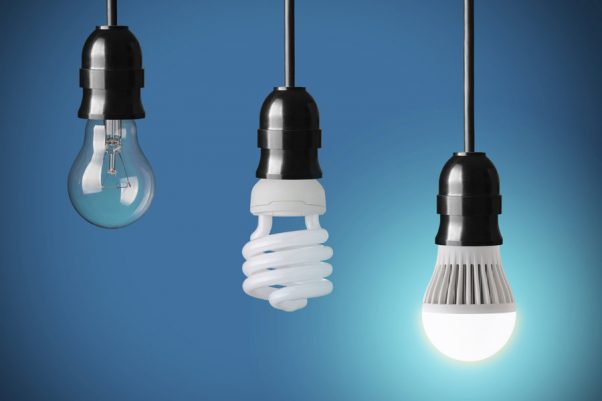I recently had to buy light bulbs. If you’re thinking that’s not really a topic for discussion, you haven’t bought light bulbs recently…
Do you know the difference between Incandescent, Compact Fluorescent, LED and Halogen bulbs? Well, its all very scientific, but, I’m going to attempt to provide you with the abbreviated version…
Energy efficiency is what the power industry talks about today. Really, it’s been the conversation since I started reporting in Washington in the late 90’s, but now, its actually happening. And light bulbs are just one part of the equation…
Incandescent: This is what we think of as the traditional light bulb. Inside the bulb is a filament of tungsten wire, through which an electric current is passed. Contact wires and a base with two (or more) conductors provide electrical connections to the filament.
Cheap. Very inexpensive to produce and sell. BUT, very energy inefficient. The bulbs emit an enormous amount of heat and the filament is extremely fragile as evidenced by the rattling you hear when a bulb has blown. The filament has broken.
Incandescent bulbs were banned for manufacture and sale in the USA in 2014 because they don’t meet current federal energy efficiency standards.
Halogen: This is an incandescent bulb. What makes this bulb different is the envelope or glass that houses the filament and tungsten and the inert gas it emits.
Basically the glass is thicker and the combination of chemicals needed to make the light work is more compatible for better energy efficiency. Halogens therefore last longer than standard incandescent bulbs, create less heat and burn more efficiently. But they’re still not the best option…
Compact Fluorescent Lightbulbs (CFL): These are the bulbs that look like ribbon candy. Compact fluorescent bulbs are made of glass tubes filled with gas and a small amount of mercury. CFLs produce light when the mercury molecules are excited by electricity running between two electrodes in the base of the bulb.
About 10 years ago, CFL’s became the most talked about bulb to reduce your energy costs significantly. They don’t emit much heat and they last possibly decades longer than incandescents. But they were also much more expensive. Since then, they have evolved; At first, they took a few minutes to get to full illumination, now they illuminate much quicker. Also, some manufacturers have put the CFL inside an envelope so they look more like traditional bulbs. Costs have also come down slightly, but, not much.
LED (Light Emitting diode): This is a version of light that is measured by lumens instead of watts. The different combination of materials and chemistry make for more efficient use and makes them safer; LEDs are much cooler than incandescent lights, reducing the risk of combustion or burns. They’re also sturdier: LEDs are made with epoxy lenses, not glass, and are much more resistant to breakage.
The more substantial materials equate to a life span of up to 20 years as contrasted against CFL’s which may last up to 10 years. The cost is also proportionate… BUT, the savings make up for the initial cost in both cases.
I lucked out. I found a brand name LED 60 2 pack for $8.99. Not bad. And I have noted a few differences:
CFL’s sometimes need to warm up. They start out somewhat dim and grow to full illumination. LED’s are at full illumination form the moment you turn them on, much like incandescent bulbs. So now let’s see which one will outlast the other…
So the moral of this story is… Keep up with technology. Scientists are winning the battle in light. With each new iteration of bulb, they find new combinations of materials and chemical compounds to create better efficiency, longer life and ultimately, lower costs.
Stay tuned for the next generation of light…






